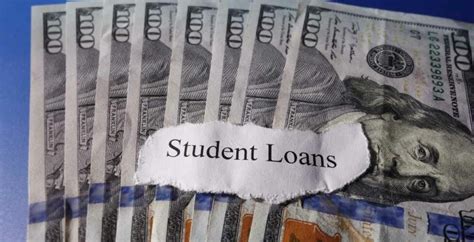Purchasing a home is a pivotal milestone in many individuals’ financial journeys. However, for those burdened with six-figure student loan debt, this dream may seem distant and unattainable. With an average student loan debt of $100,000 in the United States, according to the Institute for College Access & Success, understanding the challenges and exploring potential solutions becomes imperative.

Understanding the Impact of Student Loans
Navigating the homebuying process with student loans requires an in-depth understanding of their impact on financial preparedness.
1. Monthly Payments and Debt-to-Income Ratio:
Student loan payments can significantly impact a borrower’s monthly budget and debt-to-income ratio (DTI), a key factor in determining mortgage eligibility. A high DTI indicates that a large portion of monthly income is allocated to debt, making it more challenging to qualify for a mortgage.
2. Down Payment and Closing Costs:
Saving for a down payment and closing costs is essential for securing a mortgage. However, student loan payments can divert funds away from these savings. According to the National Association of Realtors, the median down payment on a home in 2022 was 12%, or approximately $25,000 for a home valued at $200,000.
3. Credit Score:
Managing student loan payments consistently and on time is crucial for maintaining a good credit score. A low credit score can affect mortgage approval odds and result in higher interest rates and loan fees.
Overcoming the Challenges
Despite these challenges, there are several strategies and assistance programs available to help individuals overcome the hurdles of buying a house with student loans.
1. Federal Loan Assistance Programs:
* Public Service Loan Forgiveness (PSLF): Forgives student loans for qualifying individuals working in public service, including teachers, firefighters, and nurses.
* Income-Driven Repayment (IDR) Plans: Adjust student loan payments based on income and family size, potentially reducing monthly payments and DTI.
2. Explore Alternative Mortgage Options:
* FHA Loans: Require a lower down payment and allow DTI ratios of up to 57%.
* VA Loans: Available to eligible military members and veterans, often with no down payment requirement and competitive interest rates.
3. Student Loan Refinance:
Refinancing student loans with a private lender can potentially lower interest rates and reduce monthly payments, freeing up funds for a down payment.
4. Down Payment Assistance Programs:
* Local Government Programs: Offer grants or low-interest loans for down payments, particularly for first-time homebuyers.
* Nonprofit Organizations: Provide financial assistance to low- and moderate-income families for homeownership.
Tips and Tricks for Success
1. Start Planning Early:
Begin exploring financial options, saving for a down payment, and building a good credit score well in advance of homeownership.
2. Seek Professional Guidance:
Consult with a financial advisor, mortgage broker, or real estate agent to understand loan options, explore assistance programs, and optimize your financial position.
3. Prioritize Loan Repayment:
Make consistent and timely student loan payments to improve your credit score and reduce debt.
4. Live Frugally:
Reduce unnecessary expenses to maximize savings for a down payment and closing costs.
5. Compare Mortgage Rates:
Shop around with multiple lenders to secure the most favorable mortgage terms and interest rates.
Tables for Reference
| Loan Type | Down Payment (Median) | DTI Ratio Limit | Interest Rates (Average) |
|---|---|---|---|
| Conventional Loan | 20% | 36% | 5.50% |
| FHA Loan | 3.5% | 57% | 5.25% |
| VA Loan | 0% | 58% | 4.75% |
| USDA Loan | 0% | 55% | 4.50% |
| Down Payment Assistance Programs | Eligibility Requirements | Assistance Amount |
|---|---|---|
| FHA 203(k) Loan | Low income | Up to $35,000 |
| Fannie Mae HomeReady Loan | Low-to-moderate income | Up to 3% |
| Freddie Mac Home Possible Loan | Low-to-moderate income | Up to 3% |
| USDA Rural Development Loan | Rural areas | Up to 100% |
| Student Loan Refinance Options | Interest Rates | Eligibility Requirements |
|---|---|---|
| Private Lenders | 2-8% | Varies across lenders |
| Federal Loan Consolidation | 5.12-6.62% | Combine federal student loans |
| Direct Consolidation Loan | 5.12-6.62% | Combine federal student loans |
Conclusion
Purchasing a home with $100k student loans is possible by understanding the challenges, exploring assistance programs, and adopting strategic financial planning. With determination, patience, and the right guidance, individuals can overcome these obstacles and achieve their homeownership dreams.
